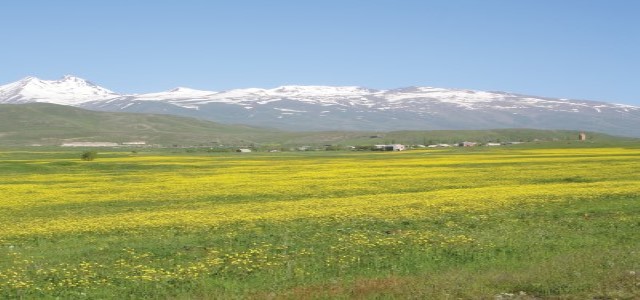In the early 2000s the prosperous Armenian village of Parakar had a problem. Despite enjoying a good income from the community’s casino operations, villagers were living next to an open sewer that flowed through the schoolyard and residents’ farm plots. The collapse of the Soviet-era water treatment plant had diverted wastewater into a canal formerly used for irrigation. The canal had gradually filled with foul-smelling sediment, causing an overflow that was threatening the health of people living nearby, and making it unsafe to grow the fresh vegetables that they used to enjoy. With climate change reducing the availability of other sources of water, the once productive fields lay barren.
Leveraging expertise and funding through partnerships
In 2010, the community leadership approached the Global Environment Fund (GEF) for assistance in tackling the problem, and GEF referred them to GWP Armenia. The Country Water Partnership brought in one of its own partners – local engineering firm JINJ – to look at options for creating a better system. Since it was clear that community involvement was needed to develop technical and financial plans acceptable to the local population, GWP also led several public consultations in the community, building understanding and enthusiasm for the project. A combination of conventional and natural treatment was proposed as a cost-effective, environmentally sound solution suited to the available location. Meanwhile the community raised 60 percent of the funds needed for construction.
Together with the local authorities, GWP Armenia prepared the technical aspects of the project and the tenders, securing additional financing from GEF and the UK Department for International Development. Construction of the treatment facilities took place in the first stage of the project between 2010 and 2012. This was followed by a second stage to 2014, financed by a combination of local funds and funds allocated through WACDEP. The second stage added naturally aerated biological treatment, enabling secondary treatment through aquatic plants. At first, the idea of an open pond met with resistance on the part of local people who could not believe that it would be clean and healthy. On seeing the completed system, however, and realising how easy it was to maintain without high-level technicians, they were convinced. And, after a short time, 60 ha of the formerly polluted 100 ha of fields were growing produce again.
Pollinizing change
Until this project, WACDEP’s work in the countries of the Caucasus and Central Asia (CACENA) region had focused largely on farm irrigation systems: this was the first demonstration pilot project for domestic wastewater treatment. The opportunity to raise awareness of sustainable options for low-cost hybrid systems for small communities made itself clear.
Following completion of the new system, to integrate the principles of the work more broadly in policy and governance, GWP Armenia organised a national meeting with partners and the government ministries to identify conditions for promoting alternative legislative, institutional, and financial frameworks for urban wastewater treatment. The aim was to create an enabling environment for using the lessons learned in Parakar in other parts of the country. Again, the reaction of government managers to the idea of an open pond for wastewater treatment was disbelief, but they could not argue with the village’s satisfaction with their system.
Now, with several other communities interested in implementing similar hybrid treatment systems, GWP Armenia has continued to negotiate funding on their behalf.
“Sometimes it is a challenge to get water into policy at national level”, said Arevik Hovsepyan, President of GWP Armenia. “A project like this, that produces what a community needs using cheap and simple technology, and that meets more than one water-related goal such as health and food production, can quickly open up new ways of thinking among government managers.”
Parakar’s new wastewater treatment system was a local solution for local level problems. The new system was inexpensive compared with the cost of reconnecting the village sewer system with larger centralised wastewater infrastructure in the region. Contributions to ongoing operating costs are made from fees collected from households using the treated wastewater for irrigating their gardens. The project improved community involvement in water management and demonstrated the benefits of an integrated approach by incorporating a wastewater service, irrigation, reduced degradation of farmlands, and improved public health. For GWP, the experience again demonstrated that, while integrated water resources management works at all levels, its value is perhaps most visible when it clearly serves a community.

